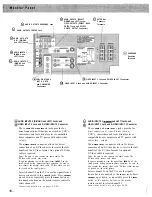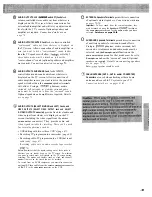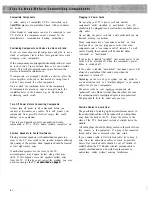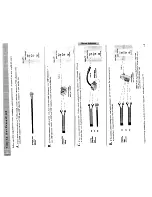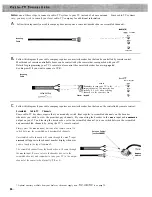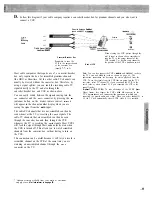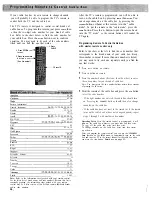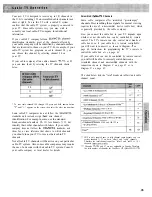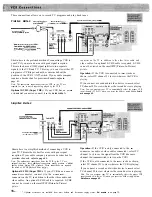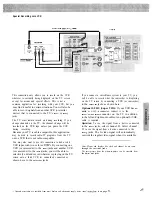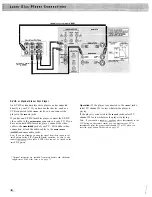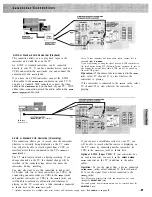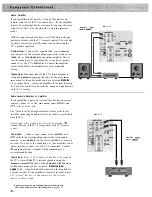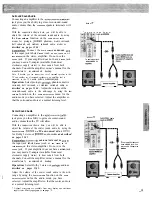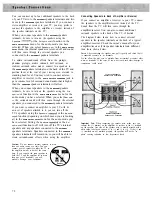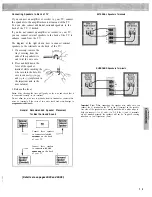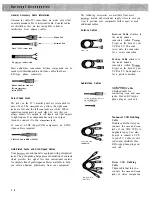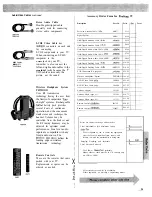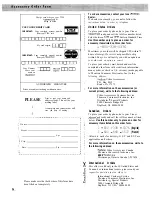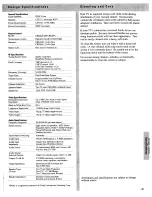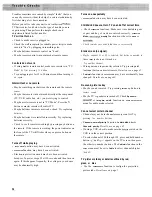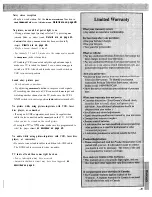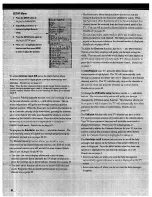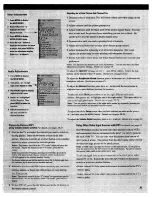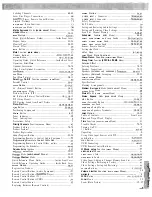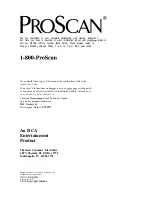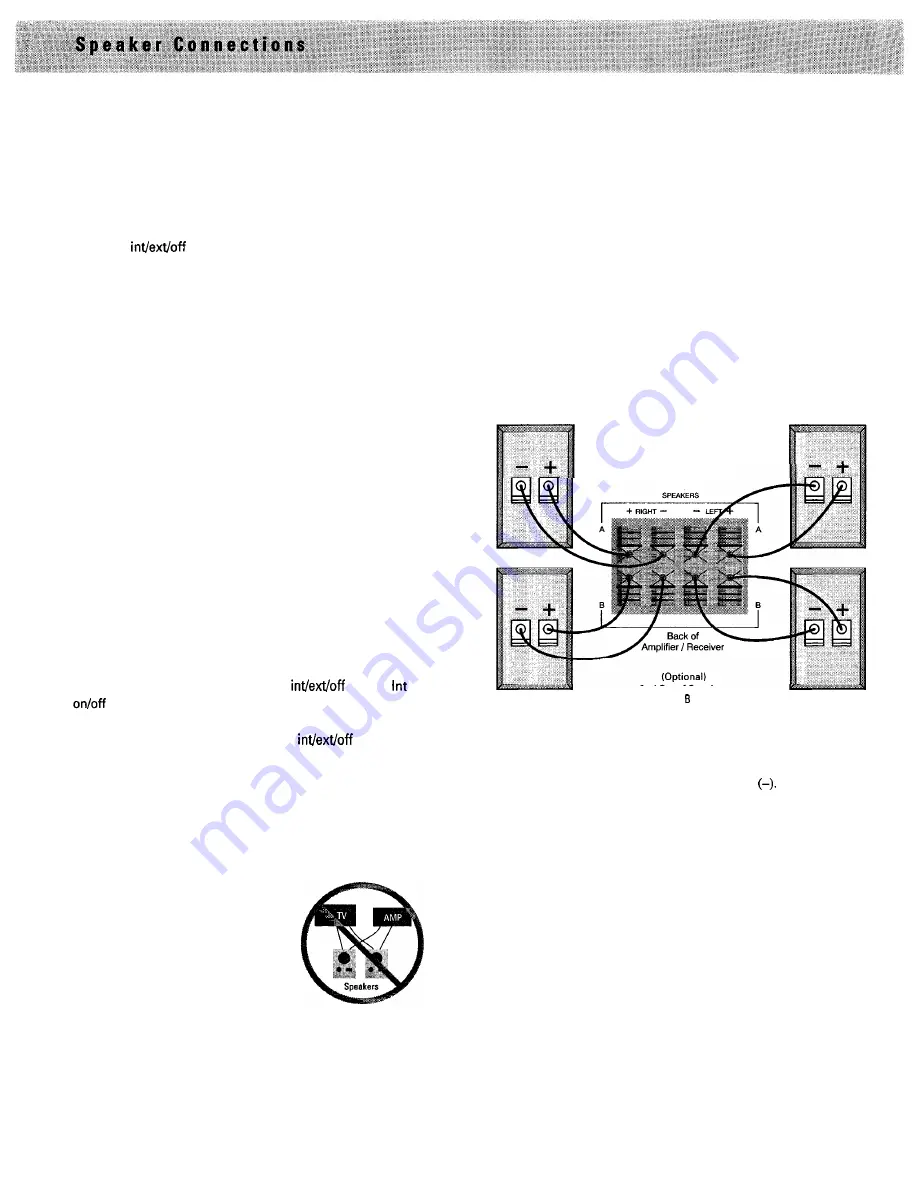
You can connect up to four additional speakers to the back
of your TV-two to the
EXTERNAL
speakers terminals and two
more to the
SURROUND
speakers terminals. If you connect a
stereo amplifier or receiver to your TV, you may prefer to
connect the speakers to the amplifier or receiver instead of
the speaker terminals on the TV.
When you connect speakers to the
EXTERNAL
speakers
terminals, be sure to turn on the speakers using the
Speakers:
or the
Ext spkrs: on/off
function in the
AUDIO ADJUST SETUP
menu for the audio mode you have
selected. When you select
Speakers: ext
in the
AUDIO ADJUST
SETUP
menu, the internal speakers are turned off and sound
will then come through the external speakers you
connected to the
EXTERNAL
speakers terminals.
To obtain surround-sound effects from the prologic,
phantom prologic, matrix surround, hall surround, or
stadium surround audio modes, connect two speakers to
the
SURROUND
speakers terminals on the back of the TV and
position them at the rear of your viewing area, elevated to
standing head level. You may wish to connect a stereo
amplifier or receiver to the
AUDIO OUTPUTS SURROUND
jack to
get a volume level of surround sound audio that is higher
than the
SURROUND
speakers terminals will allow.
When you connect speakers to the
SURROUND
speakers
terminals, be sure to turn on the speakers using the
Rear
spkr: on/off
function in the
AUDIO ADJUST SETUP
menu for the
audio mode you have selected. When you select
Rear spkr:
on,
the surround sound will then come through the external
speakers you connected to the
EXTERNAL
speakers terminals.
If you want to connect an amplifier to your TV with its
own set of speakers attached to it, you can turn off the
TV’s speakers using the
Speakers:
or the
spkrs:
function (depending on which menu you are looking
at) in the
AUDIO ADJUST SETUP
menu for the audio mode you
have selected. Setting the
Speakers:
or the
Ext
spkrs: on/off
function to off will turn off the TV’s internal
speakers and any speakers connected to the
EXTERNAL
speakers terminals. Speakers connected to the
SURROUND
speakers terminals will remain on, so you will be able to
create surround-sound effects when using the amplifier.
Caution:
Do not connect external speakers to more
than one audio source at a time. You can
connect a set of speakers to either the TV or
the amplifier but not to both at the same
time. If you connect the same speakers to
both the TV and the amplifier (or to more
than one set of terminals), you will
probably damage your equipment.
Connecting Speakers to Back of Amplifier or Receiver
If you connect an amplifier or receiver to your TV, connect
the speakers to the amplifier/receiver instead of the TV.
Sound from the TV will then come through the
amplifier/receiver. You can also connect additional
surround speakers to the back of the TV, if desired.
The diagram below shows how to connect external
speakers to the speaker terminals on the back of a typical
amplifier/receiver. Check the owner’s manual for your
amplifier/receiver if its speaker terminals look different
than those shown below.
Notes:
After connecting the speaker wire, pull it gently and check that it
is connected securely to its terminals.
Do not allow the wire core to protrude from its terminal or contact other
wires or terminals. If the cores of two wires touch each other, damage to
components could result.
1st Set of Speakers
Connect to A Terminals
2nd Set of Speakers
Connect to Terminals
Important Note:
When connecting the speaker wire, make sure you
connect the (+) terminal on the amplifier or receiver to the (+) terminal
on the speaker. One side of the speaker wire is usually marked with a
white stripe to help you connect (+) to (+) and (-) to
If the (+) and
(-) terminals are not matched properly, the speakers will not be “in
phase” causing reduction in low frequencies (bass).
7 2
Summary of Contents for PS52682
Page 65: ...I I I I I I I I I I t 1 I I I I 1 II 1 I 1 ...
Page 81: ......
Page 85: ......
Page 86: ......

